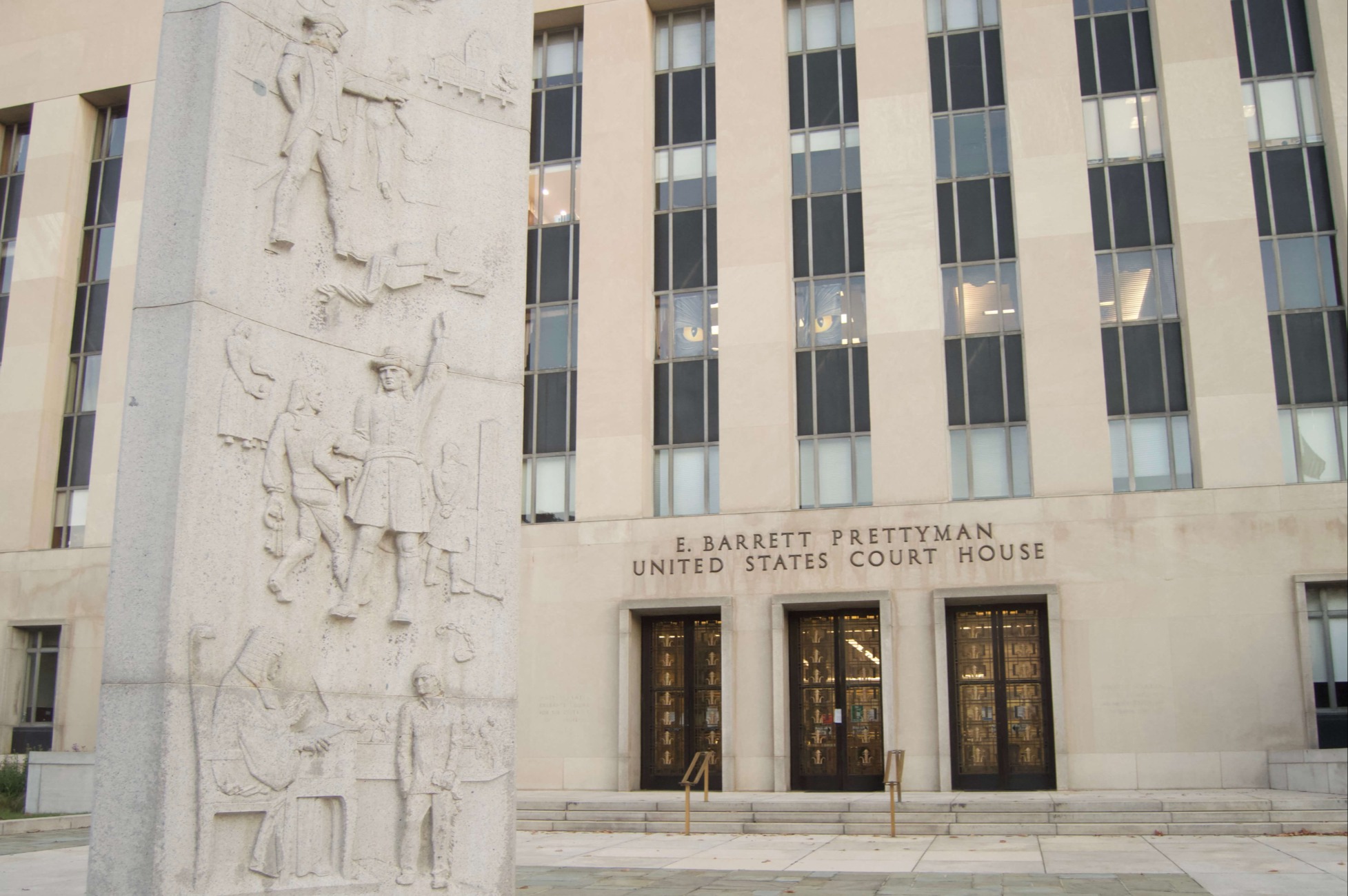Barring Asylum Claims: The President Versus the Statute
President Trump has released a proclamation ordering that the United States will only consider asylum applications at recognized ports of entry along the U.S-Mexico border.

Published by The Lawfare Institute
in Cooperation With

President Trump has released a proclamation ordering that the United States will only consider asylum applications at recognized ports of entry along the U.S-Mexico border. Together with the interim final rule issued by the Department of Homeland Security (DHS) and Department of Justice (DOJ), the proclamation clashes with the plain language, structure and plan that Congress outlined in the Immigration and Nationality Act (INA). While the Supreme Court rejected statutory arguments against Trump’s travel ban in Trump v. Hawaii, the statutory case against the new asylum proclamation is more pointed. Indeed, Congress anticipated the problem of border inflows noted in the proclamation and enacted detailed procedures that preempt the field.
First, some background: The new proclamation cites increased migration of Central Americans to the United States through Mexico. The interim final rule, which DHS and DOJ issued without prior notice and comment from interested stakeholders, bars foreign nationals crossing between designated ports of entry on the U.S. southern border from seeking asylum. It allows those persons to seek only remedies that are far more difficult to obtain, such as withholding of removal and relief under the Convention Against Torture (CAT). Foreign nationals (referred to as “aliens” under the INA) arriving between designated entry points who wish to seek asylum because of a “well-founded fear” of persecution will thus have to return to Mexico and endure additional risk traveling to a designated location. If they do not wish to shoulder this risk, they will have to meet a materially more demanding standard of proof to prevail in withholding or CAT cases. For support, the new proclamation relies on 8 U.S.C. 1182(f)—the same provision that the government cited to support the travel ban—which authorizes the president to bar the entry of “any alien or class of aliens” whose entry would be “detrimental to the interests of the United States.”
The new policy clashes with the INA’s plain meaning. For almost 40 years, Congress has clearly stated that a foreign national who presents herself anywhere on the U.S. border or at a port of entry such as a harbor or airport has a right to claim asylum. In language codified as part of the Refugee Act of 1980, Congress authorized asylum claims by any foreign national “physically present in the United States or at a land border or port of entry” (emphasis added). Congress changed this text in 1996, but expressly reaffirmed in 8 U.S.C. 1158(a)(1) the eligibility for asylum of “any alien who is physically present in the United States or who arrives in the United States (whether or not at a designated port of arrival)" (emphasis added). This inclusive provision surely reflected Congress’s appreciation of facts on the ground: refugees often flee for their lives and cannot pick and choose at leisure the precise location at which they will seek relief. Given that exigency, allowing an applicant for refugee status to assert a claim for asylum at any point along a land border is a necessary component of essential refugee protections.
Since 1980, it has been Congress’s goal to assemble those necessary components into a coherent structure. Congress passed the Refugee Act of 1980, which first mandated inclusive asylum procedures for all arriving foreign nationals, to “provide a permanent and systematic procedure for the admission … of refugees.” That comprehensive approach replaced a patchwork of provisions for refugees that had been in place for the entire post-World War II era. Inclusive eligibility procedures for asylum were a key part of this plan.
As the Supreme Court explained in INS v. Cardoza-Fonseca (1987), Congress sought to provide greater protection for refugees by carefully distinguishing between asylum and the complementary remedy of withholding of removal, which entails a substantially higher standard of proof. To obtain withholding, an applicant must show by a preponderance of the evidence that she would be subject to persecution upon return to her country of origin. A preponderance standard requires proof that it is more probable than not that an applicant would be subject to persecution. Today, applicants receive withholding only if they fail to qualify for asylum on grounds unrelated to their fear of persecution, such as prior criminal conduct. In Cardoza-Fonseca, the government argued that the preponderance standard applied to both asylum and withholding. Rejecting this argument, the Supreme Court found that Congress deliberately drafted the Refugee Act to allow asylum claims predicated merely on a “reasonable possibility” of persecution.
According to the justices, Congress viewed the preponderance standard sought by the government as flatly inconsistent with the asylum definition in the 1980 statute. In reaching this conclusion, the Supreme Court looked to the provisions of the U.N. Refugee Protocol, which the U.S. ratified in 1967, and the U.N. Convention on Refugees, which the protocol incorporates by reference. As the Conference Report on the 1980 Act noted, the language in the Refugee Act was “based directly” on the Protocol’s language and “is intended … [to] be construed consistent with the Protocol.” In Cardoza-Fonseca, the Supreme Court found that “[t]here is simply no room in the United Nations’ definition [of asylum] for concluding that because an applicant only has a 10% chance of being shot, tortured, or otherwise persecuted… he or she has no ‘well-founded fear’ of the event happening.” According to the Supreme Court, Congress clearly believed that a standard higher than 10% was unduly onerous. Particularly since a refugee must often leave a place of danger hurriedly and must then reconstruct past events thousands of miles away to gain asylum, a rigid insistence on a preponderance standard would provide inadequate protection. An asylum applicant, unlike an applicant for withholding, need not jump through the hoop of proving that an event is more probable than not to demonstrate a reasonable, objective fear of persecution within Congress’s definition. Withholding of removal is a fallback, but it is only that; Congress saw asylum as the principal avenue for refugee relief.
While the proclamation and accompanying DHS interim final rule cite increased migration from Central America as a reason to depart from Congress’s scheme, Congress has already legislated comprehensively to address the pressures of inflow at the southern border. In 1996, as part of a massive overhaul of immigration, Congress enacted what it called “expedited removal” provisions—now codified in 8 U.S.C. 1225—which authorized summary deportation, without a full immigration court hearing, of certain foreign nationals apprehended at or near a land border. While these truncated expedited removal processes have triggered criticism from refugee advocates, it included a carve-out for asylum-seekers that tracked verbatim the asylum provisions described above. Under the 1996 legislation, a foreign national could assert an asylum claim as long as that individual was physically present in the United States or had arrived at any point of entry, whether or not the government had officially “designated” that location. For any such individual, an asylum officer would determine if the claimant had a “credible fear” of persecution, which the 1996 act defined as a “significant possibility” of prevailing in any asylum claim—a standard materially lower than the preponderance standard that governs withholding of removal and CAT relief. Under the 1996 summary procedure, a claimant who met the “significant possibility” standard would end up in full adversarial proceedings in immigration court.
The new proclamation and DHS final interim rule would disrupt Congress’s plan by requiring Central Americans between designated entry points to jump through the hoop of qualifying for withholding of removal. Many will not be able to hurdle that barrier, which the Supreme Court in Cardoza-Fonseca held was inconsistent with comprehensive protections established by Congress. Put bluntly, substituting withholding for asylum will result in turning away applicants with a fear of torture, death or other persecution that Congress defined as well-founded and objectively reasonable. Responding to this humanitarian concern, the DHS final rule comments breezily that those affected are not at risk of persecution or torture in Mexico, whatever their fate in their countries of origin. However, that unsupported conclusion ignores the peril that asylum-seekers face from smugglers and other lawless groups operating in Mexico. If, as the final rule concedes, increased arrivals at designated entry points will create delays, those delays will spell peril for asylum-seekers. Congress appreciated in 1980 and 1996 that such peril was too much to bear. That is why Congress expressly made arriving foreign nationals eligible to seek asylum anywhere on U.S. land borders.
While the Supreme Court granted the president wide leeway under § 1182(f) of the INA in Trump v. Hawaii, the court based that flexibility on analysis of the statutory scheme. There is no such argument available to the administration here: The asylum framework that Congress enacted in 1980 and affirmed in material part in 1996 unambiguously clashes with the new proclamation’s prescriptions. Perhaps the administration is correct that increased migration from Central America requires further modifications in asylum procedure. But it should address that argument to Congress instead of acting unilaterally to dismantle express protections in the INA.





